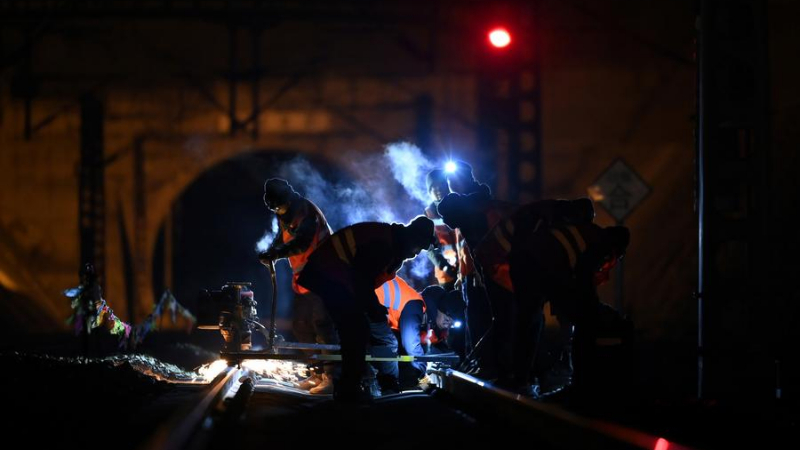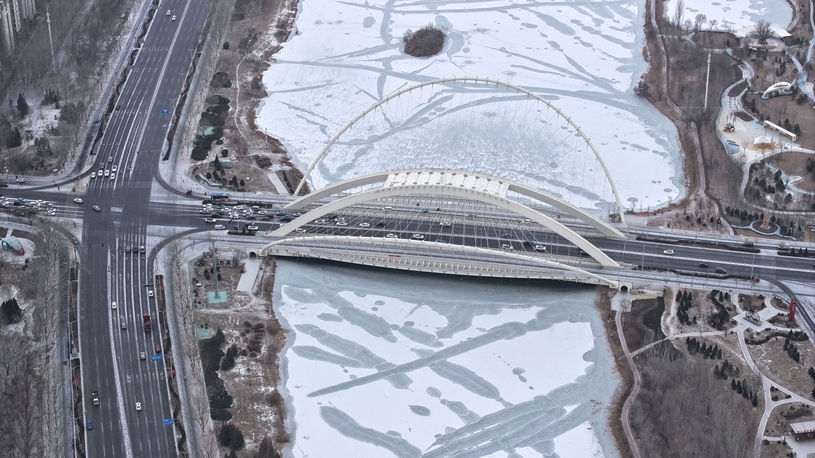Xinhua Headlines: Catastrophic wildfires rage in Los Angeles, causing massive losses
Source: Xinhua
Editor: huaxia
2025-01-11 22:50:47
* Since the blazes erupted on Tuesday, more than 36,000 acres have been scorched, over 10,000 structures destroyed, and at least 11 lives lost.
* As wildfires seem more like a certainty than a risk in California, many losses will not be insured. JPMorgan suggests that only 20 billion dollars of economic damage will be covered.
* Describing the situation as "deeply troubling," California Governor Gavin Newsom emphasized the need for answers as the state grapples with one of its worst wildfire disasters.
LOS ANGELES, Jan. 11 (Xinhua) -- Los Angeles County is grappling with one of the most destructive wildfire crises in its history, as flames fueled by powerful winds and prolonged dry conditions have ravaged the most populous county in the U.S. state of California.
Since the blazes erupted on Tuesday, more than 36,000 acres have been scorched, over 10,000 structures destroyed, and at least 11 lives lost.
Preliminary estimates place the economic losses from the wildfires between 52 billion and 57 billion U.S. dollars, exceeding the devastation caused by California's 2018 wildfires.
RAGING WILDFIRES
At least six wildfires are still burning across Los Angeles County, according to CNN. The Palisades Fire in Pacific Palisades, a wealthy neighborhood on the coast, is the largest and most devastating among the active fires. Driven by winds reaching 80 miles per hour, the fire rapidly spread across the region, engulfing homes, businesses and natural landmarks. Simultaneously, the Eaton Fire erupted near Altadena in the far north, further stretching firefighting resources.
The flames have so far displaced 180,000 people as fierce winds threatened to spread the embers farther still. U.S. President Joe Biden on Friday compared Los Angeles to a "war scene" as multiple major wildfires continued to engulf neighborhoods around the city.
Michael, an accountant from Altadena, evacuated just moments before his spacious home was engulfed in flames as firefighters struggled to contain the blaze.
"It's like living through Armageddon," he told Xinhua. "We've lost everything -- everything but each other."
Dorothy, a longtime resident of the Palisades, also lost the home she had lived in for 40 years, along with the homes of all her neighbors.
"The whole area is wiped out. It's a nightmare," she told Xinhua. "I'm a retired school administrator, and most of us bought our homes decades ago when they were affordable. Now, even if there were homes left to buy, who can afford that?"
To make matters worse, false evacuation alerts were issued across Los Angeles County this week, causing widespread panic. People around the region continued receiving erroneous evacuation alerts into Friday afternoon. County emergency management officials suggested that disruptions to cellphone towers caused by the wildfires may have contributed to the issue.
The alerts were intended to notify residents of the West Hills neighborhood, threatened by the rapidly spreading Kenneth Fire. However, the messages were broadcast countywide on Thursday night and, for some, again on Friday morning.
The failure has raised concerns among public safety officials about the potential for public mistrust in future alerts. They worry that repeated false alarms could incite unnecessary panic or, worse, lead residents to disregard critical warnings during emergencies.
THE CAUSE
It is unclear what ignited the fires ravaging Southern California, and investigators may need months to determine a definitive answer. However, energy industry experts suggest keeping power lines active during arid and windy conditions may have contributed to the fires' rapid spread.
Utility equipment, including power lines, has been linked to several major fires in recent years, such as the 2018 Camp Fire in California, which claimed 85 lives and destroyed the town of Paradise. Similar incidents include the 2023 wildfire in Maui, Hawaii, and a 2020 fire near Oregon's coast.
A troubling revelation in the wake of the current fires is that the Los Angeles Department of Water and Power, the largest municipal utility in the country, does not have a program to proactively shut off power in urban areas amid heightened fire risk. By contrast, California's other power providers have implemented such measures for years.
The department's latest wildfire mitigation plan shows it lacks other fire-risk reduction strategies commonly used by other utility companies in California. For example, unlike its neighboring utilities, it has not established a network of cameras and weather stations to monitor wind speeds and other risk drivers.
As wildfires seem more like a certainty than a risk in California, many losses will not be insured. JPMorgan suggests that only 20 billion dollars of economic damage will be covered.
The wildfires are likely to highlight deep flaws in California's struggling insurance market, where companies have increasingly withdrawn from providing home insurance in the state. In March 2024, State Farm, California's largest insurer, canceled 30,000 home insurance policies, citing the escalating risk of wildfire losses.
BLAME GAME
As wildfires raged, California Governor Gavin Newsom announced on Friday that he was ordering an independent review to investigate why firefighters ran out of water early in their response efforts. Describing the situation as "deeply troubling," Newsom emphasized the need for answers as the state grapples with one of its worst wildfire disasters.
Roughly 20 percent of hydrants across the city went dry as crews battled blazes, Los Angeles Mayor Karen Bass said.
Meanwhile, President-elect Donald Trump launched a series of attacks against Newsom, criticizing the governor's forest management policies and calling for his resignation.
Despite Trump's criticism, the federal government under Biden has pledged full support for California's wildfire response. At a White House briefing on Thursday, Biden announced that the federal government would cover the entire cost of wildfire response measures for 180 days.
This includes debris removal, shelter for displaced residents, and salaries for first responders. Biden did not directly address Trump's comments during the briefing, instead focusing on the immediate steps needed to protect lives and aid recovery efforts.
(Video reporters: Huang Heng, Zhang Yucheng; video editors: Zhang Yucheng, Li Qin, Liu Ruoshi).■













Comments